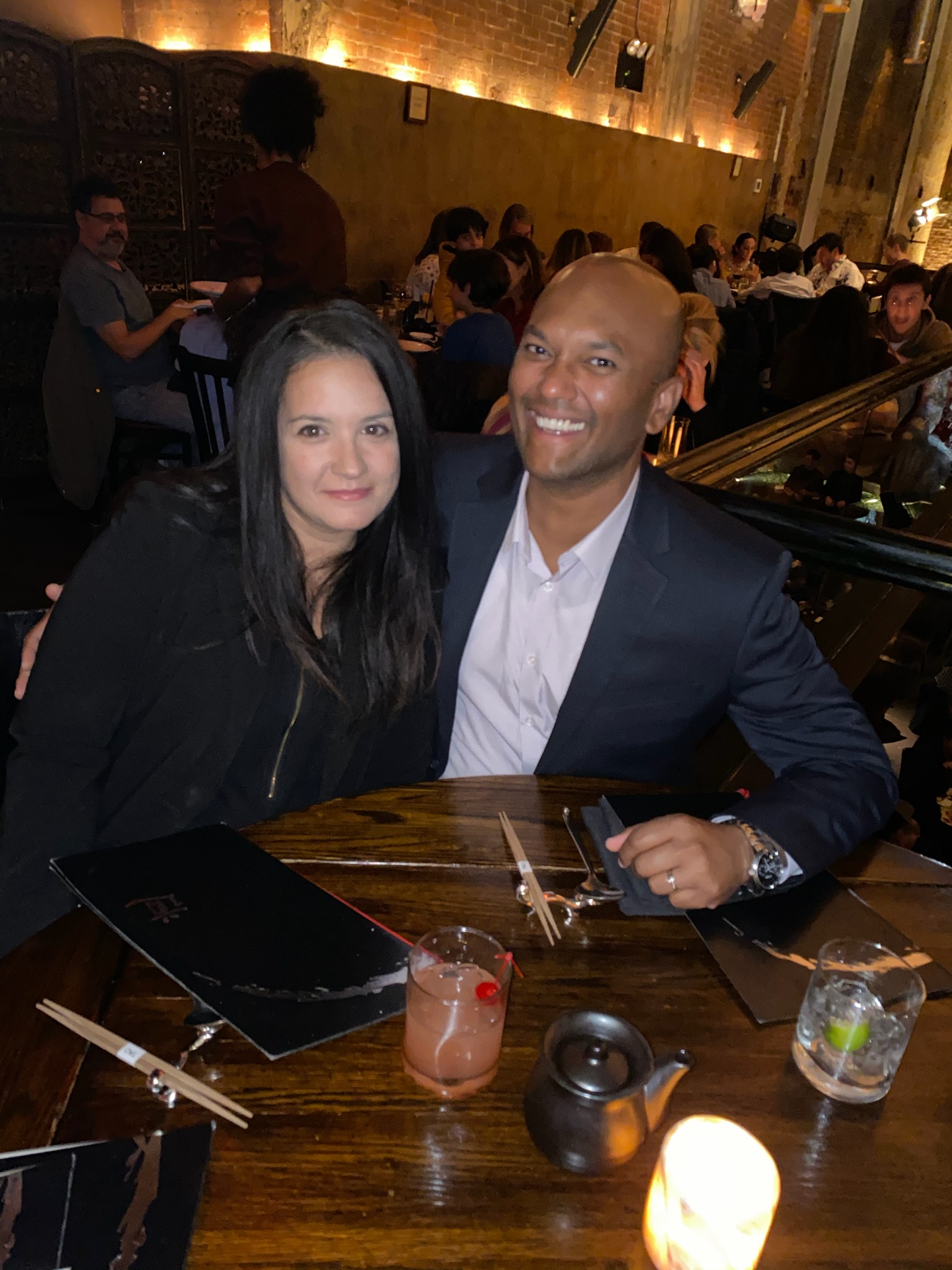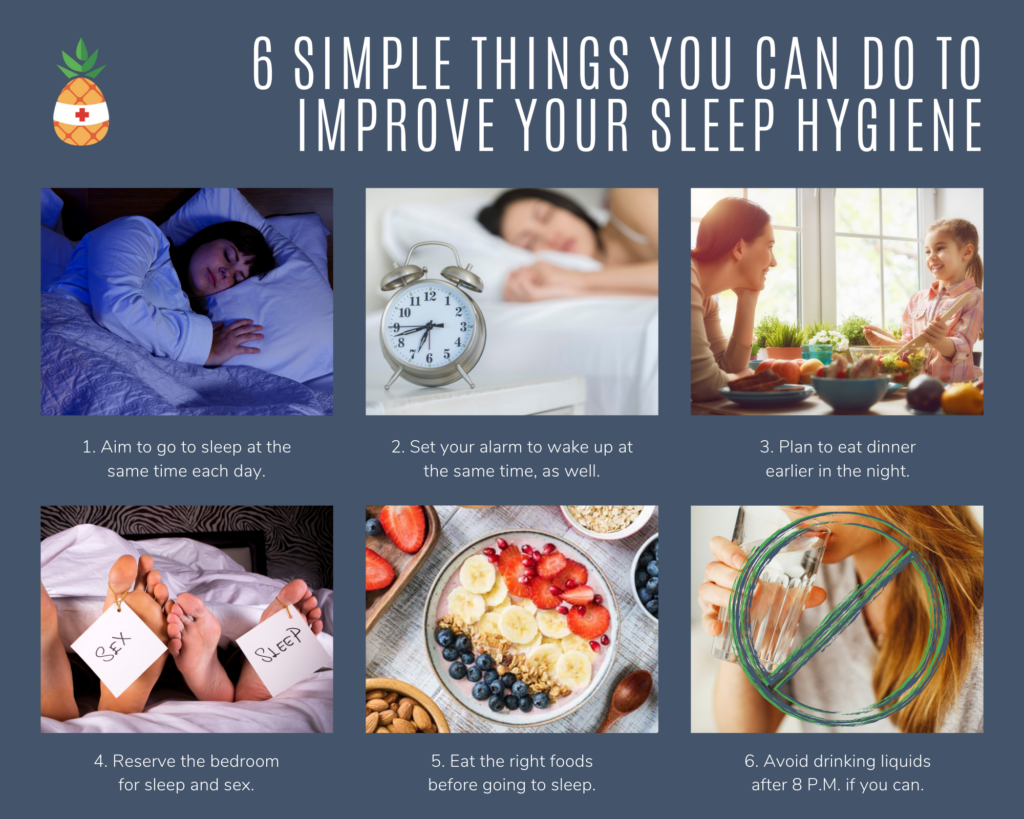Michael Jose is a passionate RPSGT and clinician who works in New York. While he started in sleep as a technician, he’s worked his way into a clinical manager role, and he’s thriving in it. Jose – pronounced like Rose but with a J – is focused on increasing patient sleep education and improving patient CPAP adherence. As a clinician, his main objective is finding the right form of therapy that can be both effective and delivered as quickly as possible for each patient.
“As soon as you acknowledge a patient’s concerns with CPAP adherence or with their sleep disorder in general, the sooner you can address those and improve their outcomes,” said Jose. “Sleep is a third of your life. It directly affects your work, your personal life, your health. Sleep is important.” Let’s dive into how he’s addressing CPAP adherence in our latest sleep story of the month.
 Michael is the clinical manager of the sleep department. He is a subject matter specialist on issues related to sleep, from the diagnosis to the treatments, working with both doctors and patients on a daily basis to collaborate and facilitate work with other departments.
On an average day, Jose might review 5-10 home sleep studies and typically between 5-8 overnight in-lab patients. It’s up to Jose to review all incoming HSATs and PSGs, analyze the studies, provide his sign-off, and then send the reviewed studies to the primary physicians. Since all of the diagnostic studies funnel through him, reviewing tests is often a big part of his day, with between 10-20 studies to analyze.
That said, study review isn’t Jose’s only responsibility. He also meets with walk-in patients to talk about sleep related issues, set up a home or in-lab test, discuss durable medical equipment (DME) intricacies, mask fitting specifics, and other topics. Jose also serves as a manager of the overnight sleep technicians, helping with their personal and professional issues.
“I’m a hybrid manager and clinician. To me, being an efficient manager requires being an effective communicator. I believe that it’s crucial for someone in my role to be able to relay the medical terminology and what the doctor is saying to the patient in an easy, tangible way,” said Jose.
Jose mentions that as a clinical manager, you have more time to work directly with patients than the primary physicians, since their time is very limited. The amount of face-to-face time Jose can have with each patient is critical, especially early on in the DME process when patients first learn of their likely lifetime-CPAP needs. Patient education is very important, and Jose works hard to give each person the time needed to discuss their unique situation. Jose truly brings an abundance of credibility and versatility to his team.
Michael is the clinical manager of the sleep department. He is a subject matter specialist on issues related to sleep, from the diagnosis to the treatments, working with both doctors and patients on a daily basis to collaborate and facilitate work with other departments.
On an average day, Jose might review 5-10 home sleep studies and typically between 5-8 overnight in-lab patients. It’s up to Jose to review all incoming HSATs and PSGs, analyze the studies, provide his sign-off, and then send the reviewed studies to the primary physicians. Since all of the diagnostic studies funnel through him, reviewing tests is often a big part of his day, with between 10-20 studies to analyze.
That said, study review isn’t Jose’s only responsibility. He also meets with walk-in patients to talk about sleep related issues, set up a home or in-lab test, discuss durable medical equipment (DME) intricacies, mask fitting specifics, and other topics. Jose also serves as a manager of the overnight sleep technicians, helping with their personal and professional issues.
“I’m a hybrid manager and clinician. To me, being an efficient manager requires being an effective communicator. I believe that it’s crucial for someone in my role to be able to relay the medical terminology and what the doctor is saying to the patient in an easy, tangible way,” said Jose.
Jose mentions that as a clinical manager, you have more time to work directly with patients than the primary physicians, since their time is very limited. The amount of face-to-face time Jose can have with each patient is critical, especially early on in the DME process when patients first learn of their likely lifetime-CPAP needs. Patient education is very important, and Jose works hard to give each person the time needed to discuss their unique situation. Jose truly brings an abundance of credibility and versatility to his team.


Jose Serves as a Pseudo Sleep Navigator

Michael Jose, and his partner Marisel, out celebrating!
CPAP Adherence is a Lifelong Challenge
“The hardest thing for any patient to realize is that CPAP or any form of therapy, is going to be a lifelong therapy,” said Jose bluntly. “It’s not something you can outgrow. There’s a small portion where their OSA is weight-related, but in most cases, CPAP therapy is part of their future.” Jose has this difficult conversation with patients on a daily basis. Not only is the DME an expensive and daunting burden, but the willpower and mental fortitude needed to embrace your CPAP is important. It’s Jose’s job to help patients understand that their sleep disorder will be a major part of their life going forward. He has a series of important tips and tricks for patients, on how to improve CPAP adherence and build toward a better future. “Now that you know you have a sleep disorder, these are the simple things you can do to better your life for the future, enjoy better sleep, and avoid feeling like you’re living in a fog, with a dull headache and groggy feelings during the day. And in general, living a better life,” said Jose. “With better sleep, you improve your metabolism, your weight typically reduces, and you have more energy to exercise. Your relationships typically improve because you are more in the moment and not in a fog. Your work efficiency improves because you’re not wasting time trying to wake up from a terrible night’s sleep.”
How Jose Actively Works to Keep Patients in CPAP Adherence
Patients typically only meet with their primary doctors for about 15 minutes, however with clinicians like Jose, they often have better accessibility. This is especially important for patients who are newly diagnosed with a sleep disorder that requires CPAP therapy. “Sleep is very important. As an educator and advocate for patients, it’s important we realize that. The first month or two is really the make or break time,” said Jose. “Patients either understand how to treat their symptoms or they don’t. The patients who have no chance are the ones receiving little or poor education and have minimal communication with their sleep provider.” Jose’s team does the opposite. Starting from the initial consultation, Jose is available to patients day or night. He focuses on making sure patients truly understand and acknowledge their sleep issue and how to treat it, and devotes a lot of time to specifically outlining how to use masks, proper fitting techniques, and why maintaining compliance is crucial. At the end of the day, what differentiates Jose’s team is their active approach to patient CPAP adherence. Although it requires time and dedication, this ongoing communication and education is what helps patients understand the importance of their condition and necessary treatment.How Sleep Centers Take it up a Notch
For Jose, who works in NYC and caters to a very diverse clientele, being someone who patients can trust is imperative. “We clearly are a diverse, open minded and accepting organization. People feel safe when they come here. They don’t feel judged like they might at other places,” said Jose. It’s because of this trust that he believes his work is so important. The time he spends with patients is the time that results in the best patient outcomes and improved patient satisfaction.“From managing the studies to managing the patients, better communication leads to better outcomes,” said Jose. “It helps lead to decreased turnaround times, and that’s a place where I think introducing AI to our workflow could help significantly.”Jose describes turnaround times that can occasionally stack up, mentioning “who wouldn’t be happier with a faster turnaround time?” Patients wouldn’t have to wait the typical two weeks that it takes for studies moving through Jose’s facility, and when describing the process, his voice yearned for more time to give back to patients. Why does he need this time? His team goes above and beyond the standard care for their patients.
Management Advice for Sleep Professionals
Like many jobs, your work as a sleep professional is often siloed away, to be handled with a lot of individual responsibility and at times minimal oversight. It can be difficult when you’re on the front line working the day-to-day sleep tasks, and your performance review comes from someone who’s not around to watch you work. Jose’s experienced this quandary himself, and his advice is sound: “Never be afraid of managing both down and up.” Jose outlines his tactics for managing his staff below him, as well. “Be engaged with your night staff,” he says. “Get in early, so you can catch them on their shifts, not yours.” He emphasizes the different work / life balance situations for day staff and night staff team members. “You really need to realize night staff are living a life that’s the complete opposite of your world.” He mentions scheduling shifts for night staff include personal, family, school work, errands and also, sleep, of course! “When my staff is off shift, I do everything I can to avoid calling them. Just because I’m on the clock, doesn’t mean they should have to be working off the clock.” Not only does he provide the strong work / life balance for his techs, but he goes out of his way to talk up his employees. In the last year, several staff members were interns at his facility and earned their registry. He brags about it. To everyone. You can see it on his social media and if you’re in the building, you’re definitely going to hear about those team wins. Involving the team is his big final takeaway message:“Let your night staff be involved in the bigger process. They care about the end patient experience. They’re part of it, not just a byproduct,” said Jose. “They’re the eyes and ears, and they’re with the patient 8 hours a night. Trust in your team.”
Enjoyed this Sleep Story of the Month?
Try another of our recent monthly sleep stories:-
September Sleep Story: How one Team is Reinvesting in the Patient Experience
-
August Sleep Story: 5 Ways to Grow HST Volume
-
July Sleep Story: Prioritizing Patient Care Leads to HST and In-Clinic Growth
And if you’d like to see how AI is impacting CPAP adherence, check out our recently recorded webinar: Using AI to Transform CPAP Compliance.







